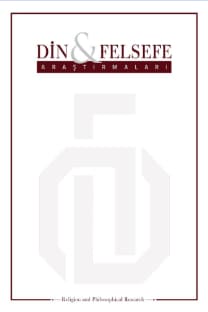DİN FELSEFESİ-KELÂM İLİŞKİSİ ÜZERİNE
<!--
/* Font Definitions */
@font-face
{font-family:"Cambria Math";
panose-1:2 4 5 3 5 4 6 3 2 4;
mso-font-charset:0;
mso-generic-font-family:roman;
mso-font-pitch:variable;
mso-font-signature:-536870145 1107305727 0 0 415 0;}
@font-face
{font-family:Calibri;
panose-1:2 15 5 2 2 2 4 3 2 4;
mso-font-charset:0;
mso-generic-font-family:swiss;
mso-font-pitch:variable;
mso-font-signature:-1610611985 1073750139 0 0 159 0;}
@font-face
{font-family:"Palatino Linotype";
panose-1:2 4 5 2 5 5 5 3 3 4;
mso-font-charset:0;
mso-generic-font-family:roman;
mso-font-pitch:variable;
mso-font-signature:-536870265 1073741843 0 0 415 0;}
/* Style Definitions */
p.MsoNormal, li.MsoNormal, div.MsoNormal
{mso-style-unhide:no;
mso-style-qformat:yes;
mso-style-parent:"";
margin-top:0cm;
margin-right:0cm;
margin-bottom:10.0pt;
margin-left:0cm;
line-height:115%;
mso-pagination:widow-orphan;
font-size:12.0pt;
mso-bidi-font-size:11.0pt;
font-family:"Palatino Linotype",serif;
mso-fareast-font-family:Calibri;
mso-fareast-theme-font:minor-latin;
mso-bidi-font-family:Arial;
mso-bidi-theme-font:minor-bidi;
mso-ansi-language:RU;
mso-fareast-language:EN-US;
mso-bidi-font-style:italic;}
.MsoChpDefault
{mso-style-type:export-only;
mso-default-props:yes;
mso-bidi-font-size:11.0pt;
font-family:"Palatino Linotype",serif;
mso-ascii-font-family:"Palatino Linotype";
mso-fareast-font-family:Calibri;
mso-fareast-theme-font:minor-latin;
mso-hansi-font-family:"Palatino Linotype";
mso-bidi-font-family:Arial;
mso-bidi-theme-font:minor-bidi;
mso-fareast-language:EN-US;
mso-bidi-font-style:italic;}
.MsoPapDefault
{mso-style-type:export-only;
margin-bottom:10.0pt;
line-height:115%;}
@page WordSection1
{size:612.0pt 792.0pt;
margin:70.85pt 70.85pt 70.85pt 70.85pt;
mso-header-margin:35.4pt;
mso-footer-margin:35.4pt;
mso-paper-source:0;}
div.WordSection1
{page:WordSection1;}
-->
Bu yazıda din felsefesi disiplininin, kelâm ilmi
açısından nasıl bir görünüm arz ettiği sorusu ele alınacaktır. Bu ilişkiyi ele
almanın yolunun her iki disiplinin içeriksel ve yöntemsel olarak neye karşılık
geldiğinin tespit edilmesinden geçtiği söylenebilir. Ancak söz konusu iki
disiplinin doğasıyla ilgili herkesçe müşterek bir kanaate ulaşmanın güçlüğü
düşünüldüğünde, bu ilişkiyi doğru bir biçimde kurmak hiç de kolay
gözükmemektedir. Din felsefesi ile kelâm arasındaki ilişkiyi ele alırken,
öncelikle din felsefesinin ve kelâmın doğasına odaklanarak her iki disiplinin
konu edindiği temel problemleri özetleyecek, ardından iki disiplinin söz konusu
problemleri ele alma biçimlerini soruşturacak, böylece iki disiplin arasındaki
ilişkiye dair genel bir resim çizmeye çalışacağım.
Anahtar Kelimeler:
Kelam, Din Felsefesi, Yöntem, İçerik
On Relationship between Philosophy of Religion and Kalam
<!--
/* Font Definitions */
@font-face
{font-family:"Cambria Math";
panose-1:2 4 5 3 5 4 6 3 2 4;
mso-font-charset:0;
mso-generic-font-family:roman;
mso-font-pitch:variable;
mso-font-signature:-536870145 1107305727 0 0 415 0;}
@font-face
{font-family:Calibri;
panose-1:2 15 5 2 2 2 4 3 2 4;
mso-font-charset:0;
mso-generic-font-family:swiss;
mso-font-pitch:variable;
mso-font-signature:-1610611985 1073750139 0 0 159 0;}
@font-face
{font-family:"Palatino Linotype";
panose-1:2 4 5 2 5 5 5 3 3 4;
mso-font-charset:0;
mso-generic-font-family:roman;
mso-font-pitch:variable;
mso-font-signature:-536870265 1073741843 0 0 415 0;}
@font-face
{font-family:Centaur;
panose-1:2 11 6 4 2 2 2 2 2 4;
mso-font-charset:0;
mso-generic-font-family:roman;
mso-font-pitch:variable;
mso-font-signature:3 0 0 0 1 0;}
/* Style Definitions */
p.MsoNormal, li.MsoNormal, div.MsoNormal
{mso-style-unhide:no;
mso-style-qformat:yes;
mso-style-parent:"";
margin-top:0cm;
margin-right:0cm;
margin-bottom:10.0pt;
margin-left:0cm;
line-height:115%;
mso-pagination:widow-orphan;
font-size:12.0pt;
mso-bidi-font-size:11.0pt;
font-family:"Palatino Linotype",serif;
mso-fareast-font-family:Calibri;
mso-fareast-theme-font:minor-latin;
mso-bidi-font-family:Arial;
mso-bidi-theme-font:minor-bidi;
mso-ansi-language:RU;
mso-fareast-language:EN-US;
mso-bidi-font-style:italic;}
p.DergiKaynakaMetin, li.DergiKaynakaMetin, div.DergiKaynakaMetin
{mso-style-name:"Dergi Kaynakça Metin";
mso-style-unhide:no;
mso-style-qformat:yes;
mso-style-link:"Dergi Kaynakça Metin Char";
margin:0cm;
margin-bottom:.0001pt;
text-align:justify;
text-indent:35.45pt;
mso-pagination:none;
font-size:12.0pt;
font-family:"Calibri",sans-serif;
mso-ascii-font-family:Calibri;
mso-ascii-theme-font:minor-latin;
mso-fareast-font-family:"MS Mincho";
mso-fareast-theme-font:minor-fareast;
mso-hansi-font-family:Calibri;
mso-hansi-theme-font:minor-latin;
mso-bidi-font-family:Calibri;
mso-bidi-theme-font:minor-latin;
mso-fareast-language:EN-US;}
span.DergiKaynakaMetinChar
{mso-style-name:"Dergi Kaynakça Metin Char";
mso-style-unhide:no;
mso-style-locked:yes;
mso-style-link:"Dergi Kaynakça Metin";
mso-bidi-font-size:12.0pt;
font-family:"Calibri",sans-serif;
mso-ascii-font-family:Calibri;
mso-ascii-theme-font:minor-latin;
mso-fareast-font-family:"MS Mincho";
mso-fareast-theme-font:minor-fareast;
mso-hansi-font-family:Calibri;
mso-hansi-theme-font:minor-latin;
mso-bidi-font-family:Calibri;
mso-bidi-theme-font:minor-latin;
mso-bidi-font-style:italic;}
.MsoChpDefault
{mso-style-type:export-only;
mso-default-props:yes;
mso-bidi-font-size:11.0pt;
font-family:"Palatino Linotype",serif;
mso-ascii-font-family:"Palatino Linotype";
mso-fareast-font-family:Calibri;
mso-fareast-theme-font:minor-latin;
mso-hansi-font-family:"Palatino Linotype";
mso-bidi-font-family:Arial;
mso-bidi-theme-font:minor-bidi;
mso-fareast-language:EN-US;
mso-bidi-font-style:italic;}
.MsoPapDefault
{mso-style-type:export-only;
margin-bottom:10.0pt;
line-height:115%;}
@page WordSection1
{size:612.0pt 792.0pt;
margin:70.85pt 70.85pt 70.85pt 70.85pt;
mso-header-margin:35.4pt;
mso-footer-margin:35.4pt;
mso-paper-source:0;}
div.WordSection1
{page:WordSection1;}
-->
In this article, the question of how Philosophy of Religion is
considered in Kalam. It can be said that the way to deal with this relationship
is through determining what both disciplines correspond to both contextually
and methodically. However, considering the difficulty of achieving a common
notion with the nature of these two disciplines, it does not seem easy to
establish this relationship correctly. In dealing with the relationship between
Philosophy of Religion and Kalam, I will firstly outline the main problems of
both disciplines by focusing on the nature of Philosophy of Religion and of
Kalam, and then investigate the ways in which two disciplines deal with these
problems, thus I will try to draw a general picture of the relationship between
the two disciplines.
Keywords:
Kalam, Philosophy of Religion, Context, Method,
___
- Brian Davies, An Introduction to the Philosophy of Religion, Oxford: Oxford University Press, 1993.
- Câhiz, Kitâbü’l-Hayevân I-V (nşr. Abdüsselâm Muhammed Hârûn), Beyrut: Dâru İhyâi't-Türâsi’l-Arabî, 1965.
- Cüveynî, Kitabü’l-İrşad ilâ kavatii’l-edilleti fi evveli’l-i‘tikad, Beyrut, 1416.
- David A. Pailin, “Din Felsefesi Nedir?” (çev. Ferit Uslu), Gazi Üniversitesi Çorum İlahiyat Fakültesi Dergisi, 2005/1-2, cilt: IV, sayı: 7-8, s. 121-154.
- Mehmet S. Aydın, “Din Felsefesi”, DİA, IX, 339-341.
- Mehmet S. Aydın, Din Felsefesi, İzmir: İzmir İlahiyat Fakültesi Vakfı Yayınları, 2002.
- Michael J. Murray-Michael C. Rea, An Introduction to the Philosophy of Religion, Cambridge: Cambridge University Press, 2008.
- Michael Peterson, William Hasker, Bruce Reichenbach, David Basinger, Akıl ve İnanç: Din Felsefesine Giriş (çev. Rahim Acar), İstanbul: Küre Yayınları, 2006.
- Yayın Aralığı: Yılda 2 Sayı
- Başlangıç: 2018
- Yayıncı: Din Felsefesi Derneği
